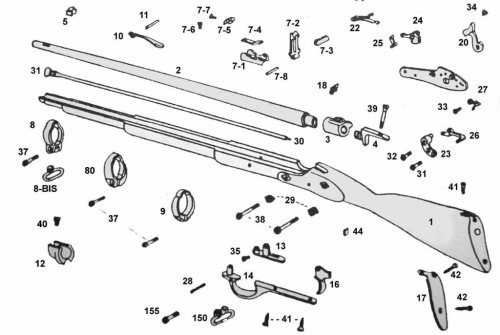Eli Whitney’s magical muskets with interchangeable partsEli Whitney is famous for pretty much
Eli Whitney’s magical muskets with interchangeable partsEli Whitney is famous for pretty much one thing; the cotton gin. Whitney’s cotton gin was invention that was so revolutionary that it pretty much overshadows his other inventions. Indeed Whitney created many other inventions, most notably industrial machinery and muskets. In 1798 Whitney’s machine shops started turning out muskets to fulfill a contract to deliver 10,000 - 15,000 for the government by 1800. Whitney had never produced a musket before in his life, but what he created would be revolutionary in terms of technology and concept.Around the time all muskets, indeed pretty much everything was made by hand by a single highly skilled craftsmen. Each part was made carefully by hand, and fitted together with other parts to create one working device. Sometimes the production of parts was farmed out to other shops, but for the most part everything was done in one place by one person. The result was that everything that was produced; from muskets to wagons to clothing, was a unique item in itself. Today, if your car breaks down you can always order replacement parts for that car. You can even take the parts from another car for replacements. This is called “interchangeability of parts”. So if you were a soldier, and the lock on your 1795 Springfield musket was damaged, you could not take the lock off of another 1795 Springfield musket, they are not identical in make, the part would not fit. Likewise you could not buy or trade for a replacement part. Rather, you would have to have a gunsmith fabricate and fit a whole new part specifically made for your musket.Eli Whitney had a new approach, to make every single part of a musket with such exacting standards of precision that they would be interchangeable with the parts of another musket. That way, if a part needed replaced, it would be just as easy as replacing a part on a car today. While this concept was not new, Whitney was the first to implement the concept on a mass scale. He built a brand new armory at New Haven, Connecticut to implement his scheme, all the while developing new manufacturing techniques, simplifying manufacturing processing, and implementing a system that would be the precursor of the assembly line. This new way of production would be called the American System of Manufacturing, and along with the steam engine would be the spark that created the industrial revolution.In 1801, after fulfilling his contract to deliver 10,000 muskets to the government, Whitney gave a demonstration of his new musket to the Secretary of War Henry Dearborn in hopes of signing a new contract. Instead of bringing completed, assembled muskets, he brought ten piles of musket parts. Taking a part from each different pile, he assembled ten fully functional muskets one at a time before him, an act that would have seemed like wizardry. Impressed with the display, the War Department was sign a new contract for more Whitney muskets.The use of interchangeable parts would go beyond firearms, encompassing machinery, vehicles, tools, electronics, pretty much every aspect of our modern lives. Indeed, standardization of parts is something that we take for granted to the point that it would be inconceivable not to have it. Eli Whitney would continue to produce firearms until his death in 1825. After his death the Whitney firearms company continued production, creating high end lever action repeating rifles after the American Civil War. -- source link
Tumblr Blog : peashooter85.tumblr.com
#guns#firearms#history#muskets#eli whitney#inventors#industrialism#industrial revolution#manufacturing#production



